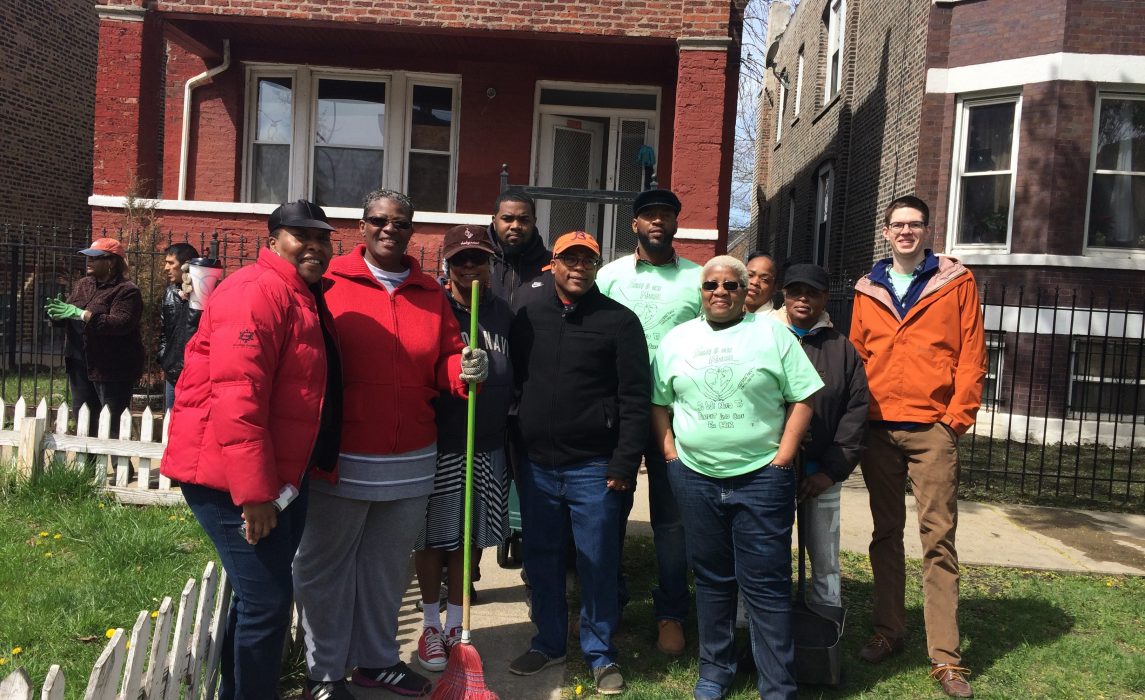Fortifying Chicago Communities against Flooding
The Problem
A large city with aging infrastructure, Chicago is vulnerable to a number of natural disasters, including flooding and extreme heat and cold. The city also did not have a system in place to bring emergency preparedness information into vulnerable communities.
The Solution
As part of Resilience AmeriCorps, the city created Gear Up Get Ready, an initiative that brought emergency preparedness and green infrastructure to residents in their neighborhoods.
- Through a competitive application process, the city selected three community groups in low-income, flood-prone neighborhoods to participate in the program.
- AmeriCorps VISTA members organized training for the winning community groups provided by Community Emergency Response Team (CERT) volunteers about emergency management and home weatherization.
- The city also awarded the community groups a small grant and provided training and support to install green infrastructure, such as rain gardens, in their community.
- The city partnered with Rain Ready, a local nonprofit organization, to implement the program.
The Results
Resilience AmeriCorps VISTA members and city staff have engaged hundreds of volunteers and increased the resilience and green infrastructure in three vulnerable communities.
- More than 70 people received resilience and emergency preparedness training.
- The city distributed 180 emergency preparedness kits to residents.
- Community groups retrofitted six community gardens in flood-prone neighborhoods of Chicago, encompassing 1,600 square feet, to better handle stormwater. They can now mitigate an estimated 33,000 gallons of stormwater annually.
Keys to Success
With the increased capacity provided by Cities of Service Resilience AmeriCorps VISTA members, the city was able to meet community members where they live. Previous emergency preparedness training programs were only held downtown near city hall. This was the first time the city had worked with partners to bring the trainings to residents in their own neighborhoods, leading to wider knowledge of risks like flooding, how best to respond in case of emergency, and available city resources.
“Getting neighbors out together, having them meet city staff, and cleaning their neighborhoods will help strengthen connections and social cohesion in these neighborhoods, while reducing blight.”
— Johannes Dreisbach, Cities of Service Resilience AmeriCorps VISTA
Dive deeper into the Resilience AmeriCorps program in Chicago here.


